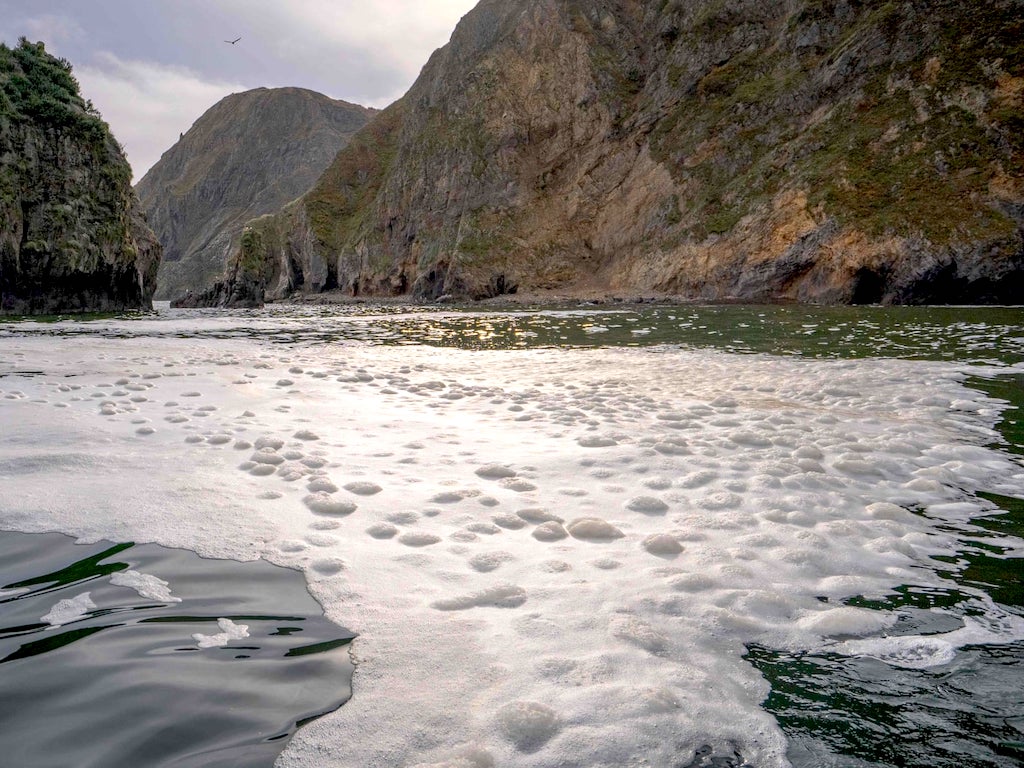2 Mins Read
Water pollution in the Kamchatka region in Russia that has led to a large number of dead marine species being found in the peninsula’s black-sand beaches may be caused by a rocket fuel leak. The pollution first garnered attention when surfers began to report injuries after being in the water, which was later confirmed to contain high levels of phenol and petroleum products. Scientists and environmental groups are calling it a mass ecological disaster.
Kamchatka, situated in the Russian Far East, is among the country’s most remote regions and famous for its idyllic nature landscapes and active volcanoes. But now, it has become the epicentre of the latest environmental crisis, with huge numbers of dead sea creatures, including octopuses, sea urchins and seals washed ashore and surfers sustaining burns to their corneas after being in the ocean.
Fears are growing that rocket fuel stored in the nearby military testing grounds have been leaked, and could be the source of the peninsula’s toxic contamination. Official tests conducted have indicated above-permitted levels of petroleum and phenol, and are racing to find the root cause. So far, the Kamchatka governor has said that the military sites Radygino and Kozelsky is likely where the leak originated from, saying that a “yellow film” has been spotted in a local river.
It comes just months after thousands of tonnes of oil was poured into the land and waterways in Arctic Siberia earlier in June, which prompted widespread anger.
When diving, we found that there is a mass death of benthos [bottom-dwelling organisms] at depths from 10 to 15 meters — 95% are dead. Some large fish, shrimps and crabs have survived, but in very small numbers.
Ivan Usatov, Scientist at Kamchatka branch of the Geophysical Service of Russian Academy of Sciences
In a comment to opposition newspaper the Novaya Gazeta, biologist Vladimir Burkanov said that some of the old stores of rocket fuel kept in Radygino may have rusted and led to the fuel leaking into nearby streams.
While the investigation is ongoing, scientists and environmental groups are calling the event a disaster with long-term consequences for wildlife and nature.
As reported by the Moscow Times, researchers from the Kronotsky Nature Reserve, the Kamchatka Research Institute of Fisheries and Oceanography (KamchatNIRO) and the Kamchatka branch of the Pacific Institute of Geography warned the governor of the scale of destruction after conducting a survey dive and collecting water samples. They say that as much as 95% of all seafloor-dwelling life could be wiped out.
“When diving, we found that there is a mass death of benthos [bottom-dwelling organisms] at depths from 10 to 15 meters — 95% are dead. Some large fish, shrimps and crabs have survived, but in very small numbers,” said scientist Ivan Usatov.
“After this dive, I can confirm that there is an environmental disaster,” said underwater photographer Alexander Korobok, who took part in the expedition and sustained chemical burns following the dive.
Lead image courtesy of Greenpeace / AFP / Getty Images.




